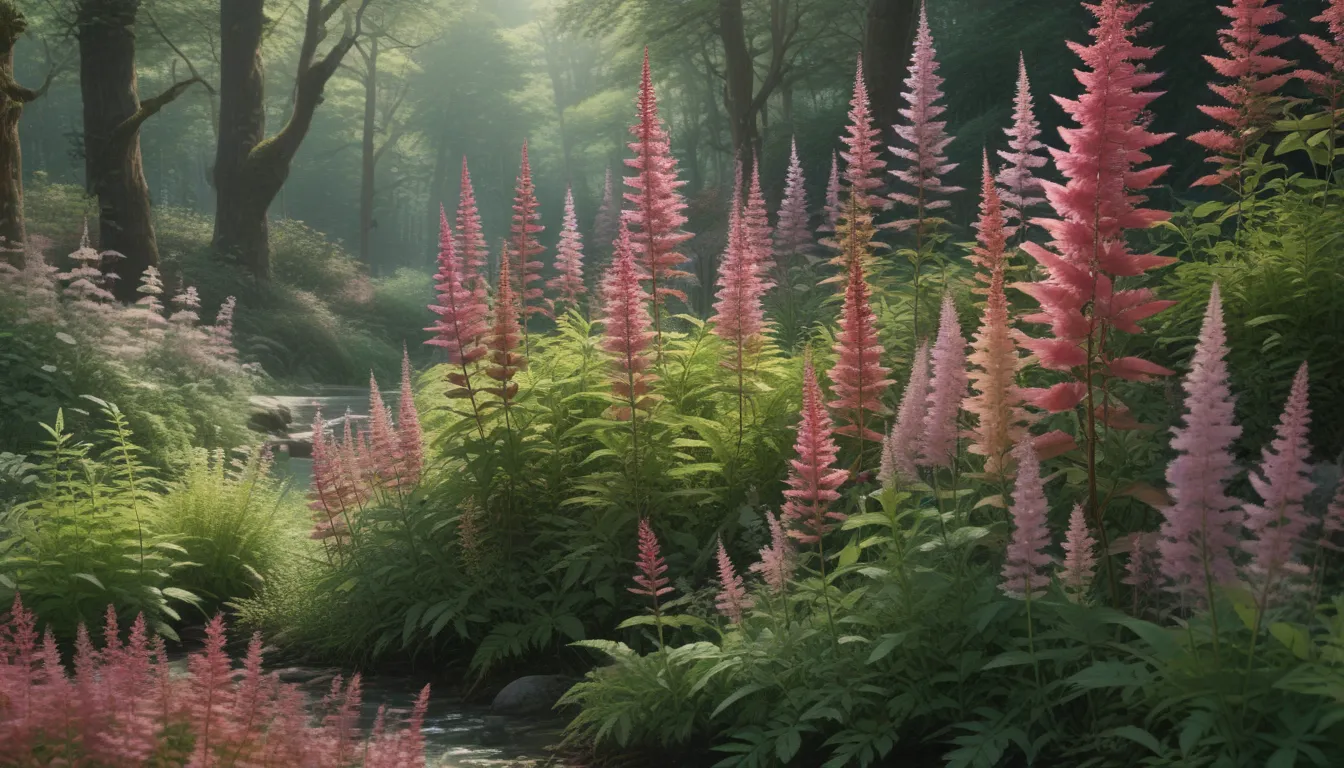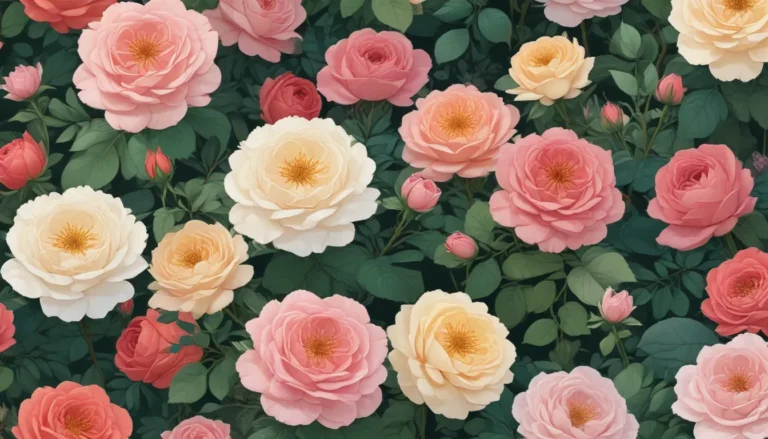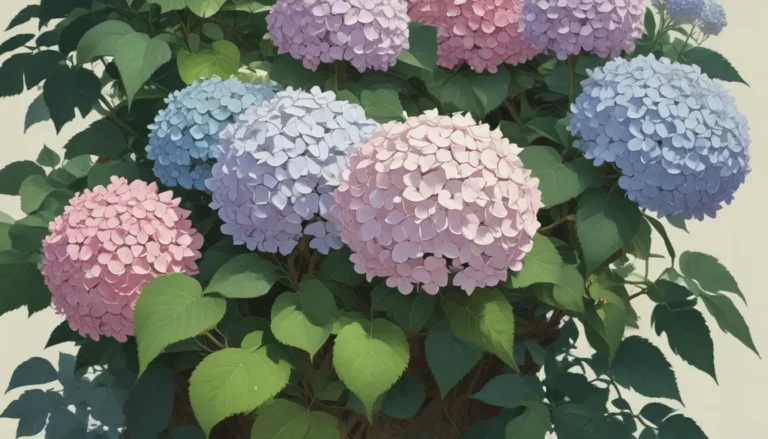How to Ensure Your Astilbe Blooms Beautifully: A Comprehensive Guide

Are you a fan of the gorgeous astilbe plant but finding that your blooms are not living up to their full potential? You’re not alone! Astilbes are known for their stunning flowers and fern-like foliage, but when they fail to bloom, it can be disappointing.
In this in-depth guide, we’ll explore the common reasons why your astilbes may be struggling to flower and provide you with practical solutions to help restore their vibrancy. From soil conditions to maintenance and winter care, we’ll cover all the bases to ensure your astilbes shine in your garden.
Understanding Astilbe Blooming Behavior
Astilbes are herbaceous perennials that produce a variety of feathery flowers in shades such as burgundy, coral, lavender, pink, and white. They typically bloom from spring to late summer, depending on the variety. However, if your astilbes are not blooming, it’s often due to a few common cultivation errors that can be easily corrected.
Let’s dive into the key factors that influence astilbe blooming:
How to Encourage Astilbe to Bloom
-
Soil Conditions
-
Astilbes thrive in cool, moist, and well-draining soil that is rich in organic matter and slightly acidic. Ensure your soil has a pH of around 6.0 for optimal growth.
-
Heavy feeders, astilbes benefit from the addition of organic materials like compost or well-rotted manure twice a year. This helps improve soil texture, nutrient content, and moisture retention.
-
Moisture Needs
-
Astilbes prefer consistently moist soil to develop strong root systems and abundant flowers. Water deeply once a week, providing about one inch of water in the absence of rain.
-
Avoid allowing the soil to become bone dry and opt for deep watering to promote healthy root growth.
-
Shade and Sunlight
-
While astilbes thrive in the shade, they can tolerate moderate amounts of sunlight. Morning sun followed by light to moderate shade is ideal for optimal blooming.
-
Avoid hot afternoon sun, as it can hinder growth and flower production.
-
Fertilizer Requirements
-
Astilbes are heavy feeders and require extra nutrients to produce large, colorful blooms. Use a slow-release fertilizer with higher phosphorus levels for optimal flowering.
-
Apply compost or worm castings in the spring and fall, followed by an additional feed of nitrogen-rich fertilizer for early flowering varieties in the fall.
-
Maintenance and Winter Care
-
Deadheading spent flowers is not necessary, as the seed heads add texture and interest to the garden. Cut back stems to about four inches before winter, and mulch with compost or shredded leaves to protect from frost.
-
Divide overcrowded clumps every three to five years to ensure healthy growth and flowering.
By addressing these key factors, you can help your astilbes bloom beautifully year after year. Remember to provide the right soil conditions, moisture levels, sunlight exposure, and nutrients to keep your plants thriving.
Why Astilbe Fails to Bloom: Common Mistakes to Avoid
If your astilbes are not blooming, it’s essential to identify the root cause of the issue. Here are some common mistakes that gardeners make when caring for astilbes:
-
Poor Soil Quality: Astilbes require well-draining soil that is rich in organic matter. Avoid heavy clay soil, as it can lead to poor root development and limited blooming.
-
Inadequate Moisture: Consistent moisture is vital for astilbe growth and flowering. Ensure your plants receive sufficient water, especially during dry periods.
-
Incorrect Sunlight Exposure: Astilbes prefer shade with some morning sun. Avoid planting them in direct sunlight, as it can stress the plants and inhibit blooming.
-
Lack of Fertilization: Heavy feeders, astilbes require regular fertilization to support flower production. Use a balanced fertilizer with high phosphorus levels for best results.
-
Neglected Maintenance: Proper winter care and division are essential for maintaining healthy astilbes. Neglecting maintenance tasks can result in reduced flowering and overall plant health.
By avoiding these common mistakes and following the recommendations outlined in this guide, you can help your astilbes bloom abundantly and beautify your garden.
Expert Tips for Astilbe Blooming Success
To ensure your astilbes bloom successfully, consider implementing the following expert tips:
-
Monitor Soil pH: Regularly test your soil pH to ensure it remains slightly acidic, around 6.0. Adjust as needed with aluminum sulfate or sulfur dust.
-
Mulch for Moisture Retention: Apply a two-inch layer of mulch in the spring to help retain soil moisture and keep the roots cool. Use materials like shredded bark or leaf mold for best results.
-
Feed Regularly: Provide astilbes with nutrient-rich compost in the spring and fall, followed by a slow-release fertilizer with high phosphorus levels. Consider additional feeding for early flowering varieties in the fall.
-
Divide Overcrowded Clumps: Divide astilbe clumps every three to five years to prevent overcrowding and promote healthy growth and flowering.
By incorporating these expert tips into your astilbe care routine, you can help your plants thrive and bloom beautifully year after year.
Conclusion
In conclusion, astilbes are stunning ornamental plants that can brighten up any shade garden with their colorful flowers and elegant foliage. By understanding the key factors that influence blooming, such as soil conditions, moisture needs, sunlight exposure, and fertilization, you can help your astilbes thrive and produce abundant flowers.
Remember to provide optimal growing conditions, regular maintenance, and proper winter care to ensure your astilbes bloom beautifully year after year. By following the advice in this guide and incorporating expert tips, you can enjoy a stunning floral display in your garden and create a welcoming environment for both yourself and your local pollinators.
What are your favorite tips for keeping astilbes flowering? Share your thoughts in the comments below and let’s continue the conversation!
For more information on growing astilbes, check out these helpful resources:
- How to Grow and Care for Astilbe Flowers
- How to Grow Astilbe in Containers
- Add Color to Your Shade Garden with 15 of the Best Astilbe Varieties
Thank you for joining us on this journey to ensure your astilbes bloom beautifully. Happy gardening!





